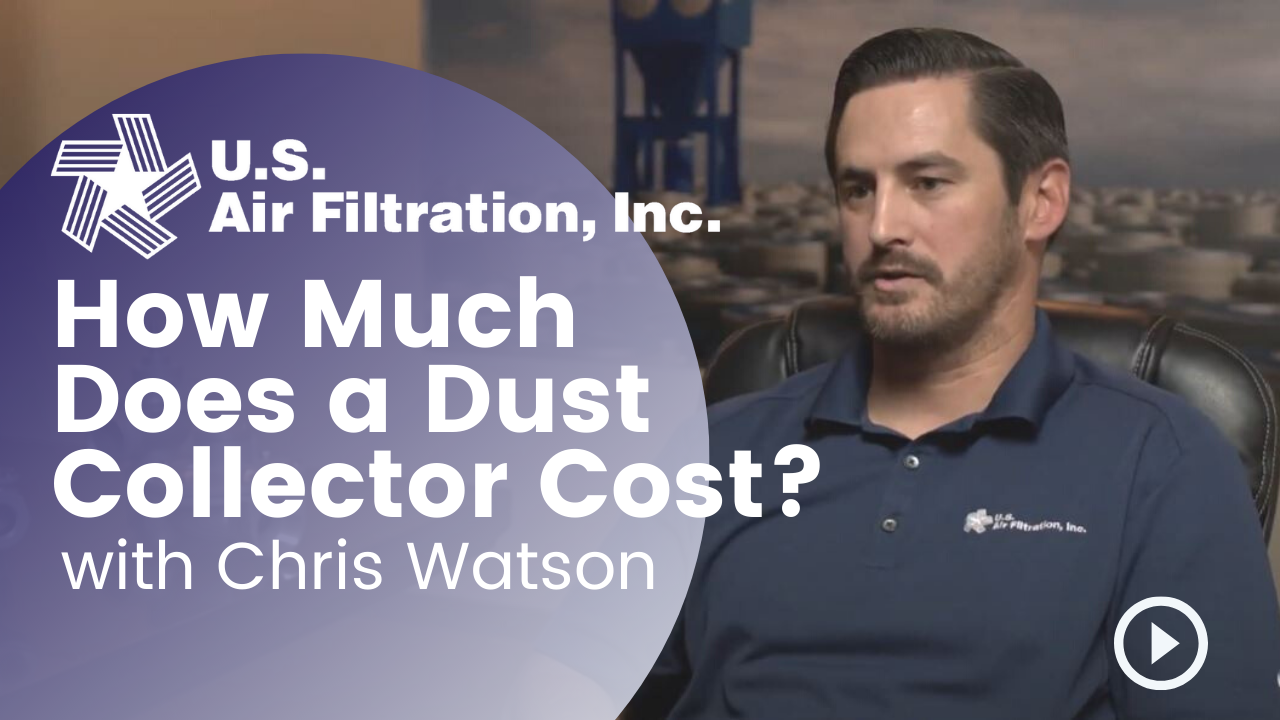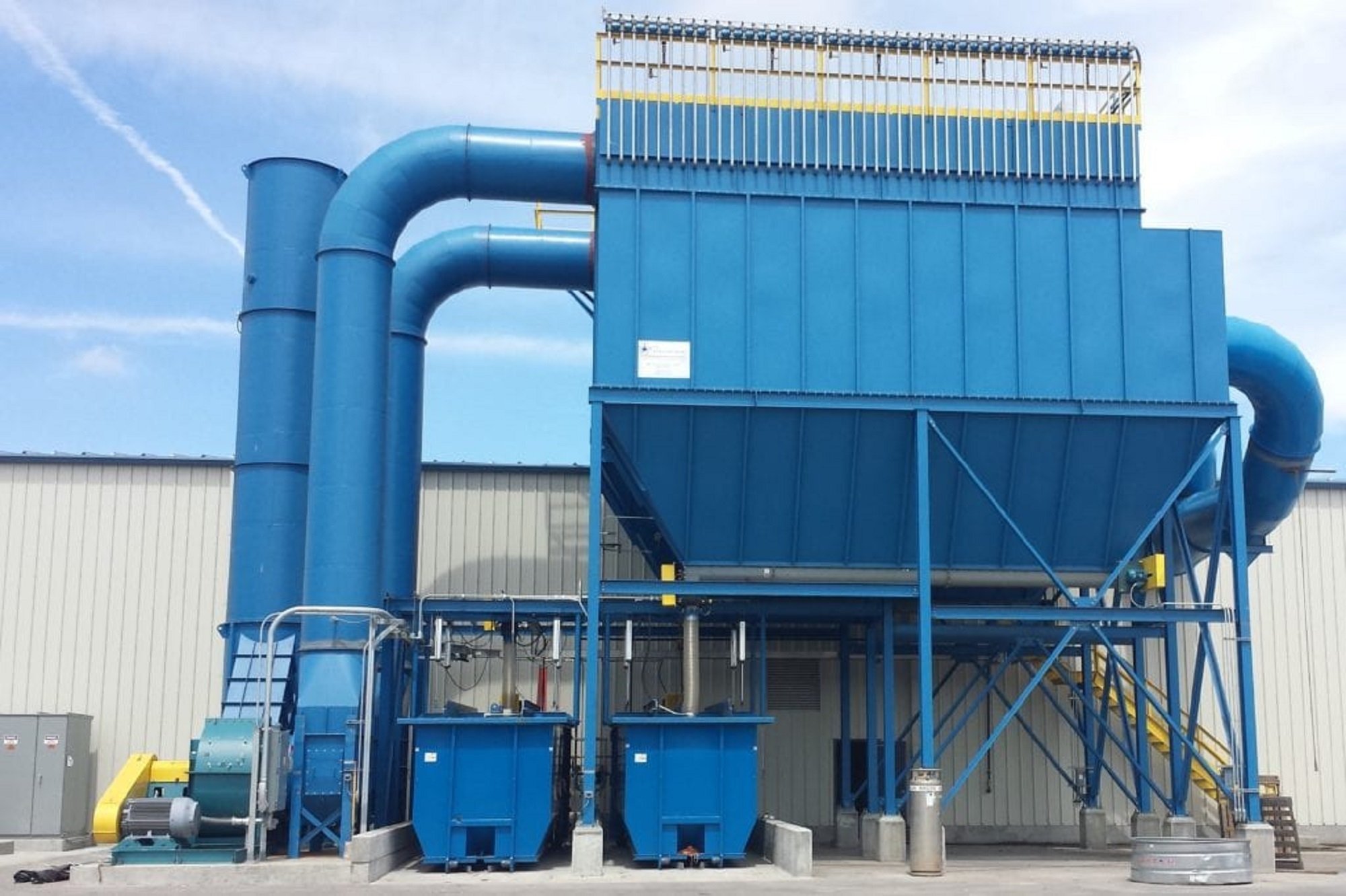One of the top questions we get from customers is how much does a dust collector cost? In this video we're going to give some ballpark estimates as well as review some of the specifics that go into sizing a collector.
Pricing for collectors can be broken down into a couple different categories.
Small Dust Collectors
First you have the small collectors, which can be anywhere from $500 to a $1000 dollars and those can be things you find at the local hardware store.
Large Dust Collectors
Then you get into the large collectors anywhere from $10,000 to $80,000 dollars and those are the bin vents cartridge collectors, even some small baghouses.
Custom Dust Collectors
Then you get into the really custom units which can be $50,000, $80,000 up to a $1,000,000 dollars.
What goes into the cost of a dust collector?
- Dust load
- Dust type
- Combustible dust
- Air to cloth ratio
- Filter media
- Fan size
- Temperature
- Material handling
- Electrical controls
Dust Load
When we're talking about dust load we want to understand how much dust is going to be collected by the system in a given time frame. The reason that's important is we need to choose the right collector as well as the right filter type to make sure that we can handle that dust appropriately.
Now when we're talking about dust we like to ask, are you going to fill up one, two, or more 55 gallon drums a day? And if that's the case, a baghouse may be a better fit. Anything under one or two 55 gallon drums a day and a cartridge collector may work for you.
Dust Type
We need to consider three different factors; the type of dust, the chemical properties and then some abrasion. The type of dust is important because we want to make sure that we're matching the right filter type, filter media to the dust itself. We're talking about the chemistry we want to make sure that the filters and the housing itself are appropriate for any type of chemicals that may be in the airstream. And for abrasion, we want to make sure that we choose the appropriate material for the housing to make sure we don't have any wear issues. Anything that is really rough or can cause a lot of wear we want to use some stainless steel., which can obviously drive up the price of the collector as well
Combustible Dust
If your dust is combustible there are a number of things that you need to consider. At the very least we're talking about a rupture disk or an explosion panel . Depending on how explosive your dust is, and that can be judged by the kst value, you can also do things like suppression systems or sprinkler systems to help mitigate that.
Air to Cloth Ratio
Air to cloth ratio is one of the biggest factors when we're sizing a dust collector and so it will have a big effect on cost. Anybody who's gotten multiple bids on a
project will be able to tell you, you got one guy quoting a 10:1 ratio another guy quoting a 2:1 and the prices are very different.
Now what people may not understand is if you go with the cheap ratio you're not going to have the performance in your collector that you want. So, really what we need to do is look at the amount of airflow as well as the amount of dust and size it appropriately. That means choosing the right air to cloth ratio for your particular dust collector and dust type. Now if you want to learn more you can call one of our experienced engineers and they can help you with the specifics. You can also watch one of our videos on air to cloth ratio.
Filter Media
When we talk about filter media in our dust collector design we need to understand really what we want the filter media to do. For some common applications we can use fairly inexpensive filter medias; polyesters, things like that. Anything high temperature that may have some chemical in the airstream. Then we may need to use a little more expensive media; fiberglass, PTFE, P84, things like that.
Fan Size
When sizing a fan for our dust collection projects we want to make sure that we have the right CFM as well as static pressure. Obviously we need to size the fan to pull the volume of air that we need, but it also needs the static pressure so that we can effectively move the air through the system. Now if we're not sizing your ductwork we may ask you some questions about that. Obviously the more duct work, the further away the collector is from the pickup points. This all affects the static pressure. It can obviously lead to a more expensive fan.
Temperature
Regarding temperature and collection design for the housing of the unit, we have a high temp application something over 400 degrees or even 300 degrees we may want to bump up from a 12 gauge to a 10 gauge housing. For the filter media, obviously we want to make sure that it's rated to handle the temperature it's going to see. And for the fan we want to make sure that we size it with that temperature in mind.
Electrical Controls & Material Handling
Not everybody needs a really fancy electrical control system. Not everybody needs a pneumatic system to push the material to a different part
of the plant. So if you do, you can call our engineers and they're happy to offer a solution. But obviously those things are going to be in addition to some of the estimates that we've given.
Today, when looking at dust collection projects my guess is most people are going to get multiple bids, and so you're likely to get at least one or two bids from the big OEM companies. And while they make excellent collectors, you may also pay for a little bit of marketing now. One thing I always like to tell people is to make sure that you're comparing apples to apples. Make sure the air to cloth ratio is relatively the same from one bid to the other. Make sure you're getting the same things from one bid to the other. What you don't want to do is pay a higher price for a collector because it's an OEM collector but it doesn't come with all the same things standard as you'd like to see.
All these things are important things to consider to make sure that your collector is really going to work for your application. If you want to learn more I would recommend you take our dust collector sizing quiz. If you have some more specific questions feel free to call one of our equipment engineers and they'd be happy to help you with any questions you'd have,








